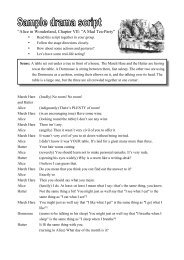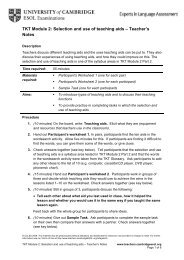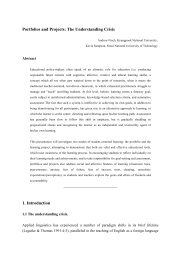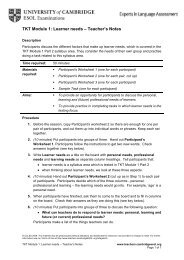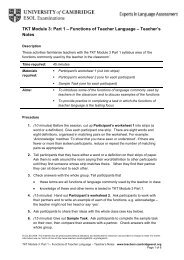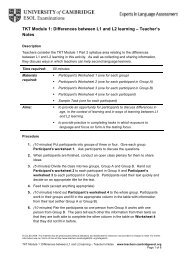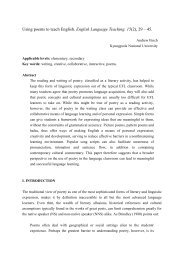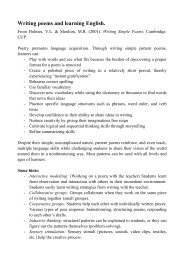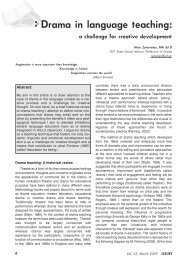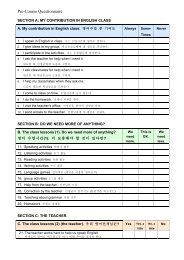here - Finchpark
here - Finchpark
here - Finchpark
You also want an ePaper? Increase the reach of your titles
YUMPU automatically turns print PDFs into web optimized ePapers that Google loves.
control their behavior, values, and morals (Tappan, 1997). Through language socialisation practices,cultural values and language are transferred to the next generation.Also transmitted through this socialisation process are language ideologies: community members'beliefs regarding a specific language or features of language, speakers of language, production oflanguage, teaching and learning of language, and interpretation and understanding of language.Community social structure have been linked to community members' linguistic behaviors(Woolard & Schifelin, 1994). Language socialisation research attempts to understand how languageideologies are reflected in the community members' use of language, particularly with and aroundchildren. Children assume an active role in language socialisation (Giddens, 1979; Ochs, 1988).Immigrant families often observe that children socialize their immigrant parents, who may have lesscontact with the dominant language and culture, into their own school experiences (Ochs, 1986). Inmany language minority families, children's use of English at home increases once they enter school(Shin & Milroy, 1999), and parents start using English with their children, often believing that theyare helping to improve their children's academic achievement (Shin, 2005).Investigating children's language socialisation patterns will increase understanding of the intricaterelationships between cultural ideas and linguistic practices. However, few studies address languagesocialisation of bilingual children in the United States (He, 2001; Smith-Hefner, 1999; Zentella,1997), and no studies have dealt with how young Korean-American children are socialized throughHL use. Studies of Korean-English bilingual children have focused exclusively their usage patternsof English versus Korean (cf. Baek, 1992; Min, 2000; Oh, 19l Shin, 1998,2005; Yoon, 1996). Thisstudy examined how language ideologiesFrom a language socialisation perspective, He's (2001) ethnographic discourse analysis studyprovided evidence that Chinese school classrooms can serve as important language socialisationsites in which child CHL learners are becoming competent members of the Chinese language andculture. He's (2001) study was situated in four different classrooms at two Chinese schools in theU.S. He examined how CHL children (aged 4.5-9, N=35) would develop communicative patternsto express "ambiguity" through socialisation. He's analysis indicates that ambiguous utterances -syntactically and semantically - are interpreted/communicated by the participants (native teachersof Chinese and HL students) through pragmatic inferences available in the givenclassroom/interactional contexts.4.3 IdentitySome studies have suggested an association between HL proficiency and identity development(e.g., Chinen & Tucker, this volume; E.J. Kim, this volume; Kondo, 1997; J.S. Lee, 2002; Oketani,1997a). A person's idea of self is socially constructed, resonating the ideologies of the society towhich he/she belongs (Mead, 1932; Schieffelin & Ochs, 1986). The perceptions and definitions ofself differ according to each society's basic beliefs and ideologies. How a person presents his/herself to the public is determined by the culture-specific concept of self (Goffman, 1955).Definitions and perceptions of self are one of the distinguishing features between Western andEastern ideologies. R. Brown (1996) argues that in the East, the self “is said to be relational,interpersonal, or collective w<strong>here</strong>as the self in the West is individualistic and autonomous” (p. 39).Clear relationships exist between the concept of relational self and linguistic forms in Asianlanguages such as Javanese, Japanese, and Korean. When interacting linguistically, speakers ofthese languages express their social identity in relation to others, highlighting the relational aspectof self (e.g., hierarchy). Failure to indicate the relational hierarchy with appropriate linguisticfeatures is regarded as rude, ignorant, and resistant to the societal order. Thus, knowledge about thecultural concept of self is essential for culturally effective and polite interactions.



